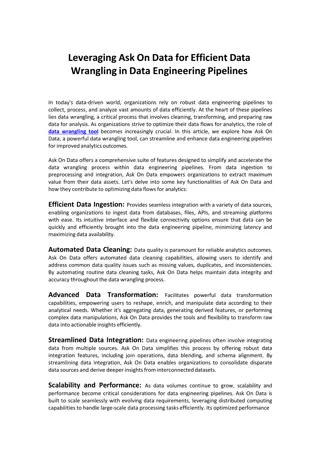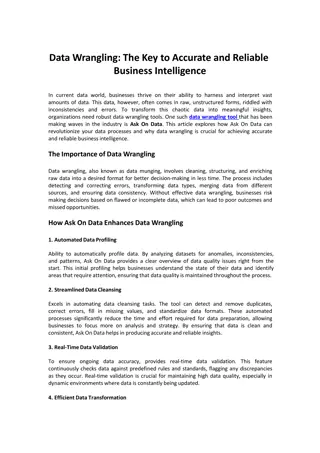
Insights into DNS Resolvers and Market Share Calculation
Discover the significance of DNS resolvers, considerations for market share measurement experiments, categorization of resolver IP addresses, and a breakdown of DNS resolver usage in the EU. Explore the handling of extra DNS queries and potential improvements in data analysis.
Download Presentation

Please find below an Image/Link to download the presentation.
The content on the website is provided AS IS for your information and personal use only. It may not be sold, licensed, or shared on other websites without obtaining consent from the author. If you encounter any issues during the download, it is possible that the publisher has removed the file from their server.
You are allowed to download the files provided on this website for personal or commercial use, subject to the condition that they are used lawfully. All files are the property of their respective owners.
The content on the website is provided AS IS for your information and personal use only. It may not be sold, licensed, or shared on other websites without obtaining consent from the author.
E N D
Presentation Transcript
The resolvers we use Jo o Damas Geoff Huston
As far as I am aware nobody actually said this: "In the EU the DNS resolvers we use are dominated by a service operated by an American behemoth that is completely unaccountable to EU users and operates entirely outside of our regulatory framework. And they are operating an essential piece of Internet infrastructure that many EU Internet users rely on. We feel that this is unacceptable situation for the EU. But when I look at the possible motivations behind the DNS4EU initiative it sure feels like this is a credible explanation!
The resolvers we use What does this mean? If you wanted to conduct a measurement experiment to calculate the market share of DNS resolvers, then what exactly should we be measuring?
Our Initial thoughts Use an Ad to send each user a unique DNS name and look at the authoritative server and collect the IP address of the resolvers asking the recursive resolver, and use Ad data to match this query to an end user IP address user Authoritative Server Recursive Resolver Measurement Ad placement data <ID, IPaddr> DNS query data <ID, DNS resolver IPaddr>
Our Initial thoughts Needed to map resolver helper addresses to resolver service Which back-end DNS addresses are used by each open resolver? RIPE Atlas helped here for those cases where the open resolver operator does not publish this information We map resolvers into a number of categories based on the resolver s IP address: Resolver is in the same AS as the end user It s a known Open DNS resolver Resolver is geo-located to the same CC as the end user Resolver is geo-located to a different CC from the end user
DNS in EU Resolvers seen from a single initial query Same AS (ISP) 70% Google 16% Same CC 8% Cloudflare 5% 2021 2022
However We observe that this single initial query generates a single query to the authoritative server only 73% of the time We see an average of 1.65 queries from distinct IP addresses at the authoritative server for each domain name What should we do with these extra DNS queries? In this case we just add them to the count Could we do better?
What are we measuring here? Seems that this experiment is not clear about what is being measured So we thought that maybe we really wanted to know all the resolvers who might see your query But to flush out all of these resolvers we need to adjust this experiment
Second Thoughts Get the authoritative server to return SERVFAIL all the time This way the stub resolver is likely to cycle through all the locally configured recursive resolvers to find a non-SERVFAIL DNS response
DNS in EU Pass 2 Data All Resolvers seen from SERVFAIL Same AS (ISP) 72% Google 26% Same CC 9% Cloudflare 6% 2021 2022
Are we there yet? No, not really might see your query is not the same as will see your query Perhaps it is also useful to understand which resolver provides the response that the user will use
Third Pass Single query same as Pass 1 But only record the first query at the auth server for each unique ID We assume that the first recursive resolver to ask the auth server is the first to provide a response to the stub resolver How does this change the measurements?
DNS in EU Pass 3 Data First Responder Same AS (ISP) 71% Google 15% Same CC 7% Cloudflare 4% 2022
Where are we now? All configured Resolvers 72% 9% 26% 6% Resolvers in the initial query set 70% 8% 16% 5% First Responder Same AS Different AS Google Cloudflare 71% 7% 15% 4% What s Google s market share of DNS resolution in EU? 26%? Or 15%
Who is we we ? Ads are directed to all kinds of end points There are various forms of Enterprise and B2B networks that are measured as well a consumer networks. These enterprise endpoints have a different DNS profile as compared to consumer retail services, as they tend to be more intensive users of open DNS resolver services than we see in consumer networks. What if the we we are referring to in this measurement are individual consumers in the EU region? What happens if we filter the ad data for Europe to look only at consumer retail ISPs?
DNS in EU Pass 4 Data First Responder, consumer ISPs Same AS (ISP) 87% Same CC 6% Google 4% Cloudflare 1% 2022
Where are we now? All Resolvers Initial query set 70% 8% 16% 5% First Responder Consumer ISPs 71% 7% 15% 4% Same AS Different AS Google Cloudflare 72% 9% 26% 6% 87% 6% 4% 1% Most consumers simply follow the ISP provider s default settings
What does all this mean? Most users of retail ISPs use their ISP-provided resolver (same AS) Some additional users in those ISPs use resolvers in different networks (ASN) but same country This can be due to the ISP having services across different ASNs The picture for enterprise networks is slightly different.
So, is there really a problem? Yes and No or perhaps No and Yes The majority of end users use the ISP-provided default in the EU region However, there is an undeniable issue about the emergence of aspects of centrality in the DNS that should concern us all So before it becomes a big problem perhaps something can be done?
Can we do something useful in this space? Possibly But perhaps not the way the European Comission was proposing to do The Internet is at its finest when it self regulates with the network and its users interests at the heart of the matter.
OK then Perhaps there is room for the establishment of a common set of operational practices for operators of DNS resolver in all their forms RIPE is a good venue to be the seed crystal for this common ruleset RIPE has a tried and trusted way to accelerate this initial step RIPE task force



















